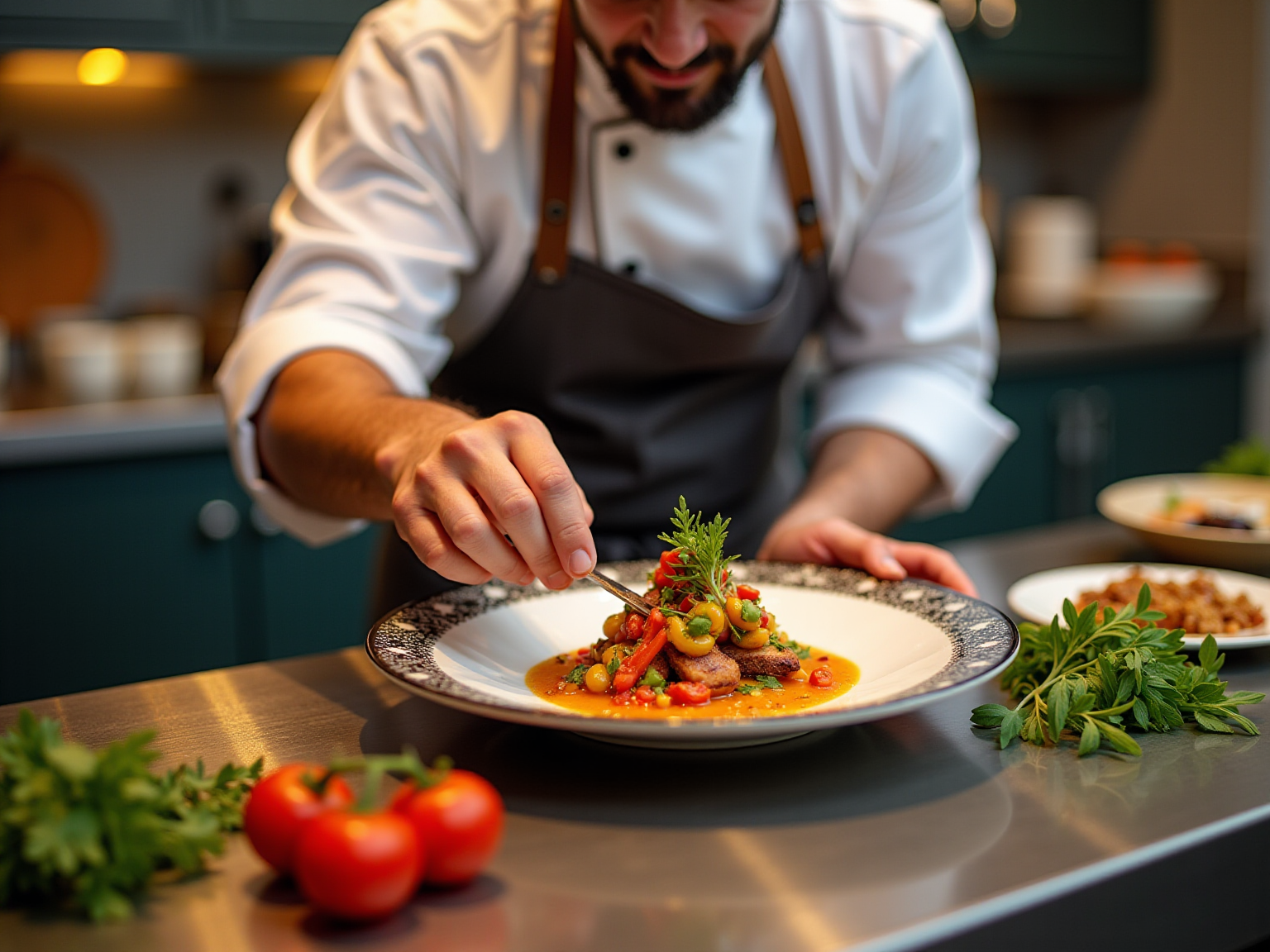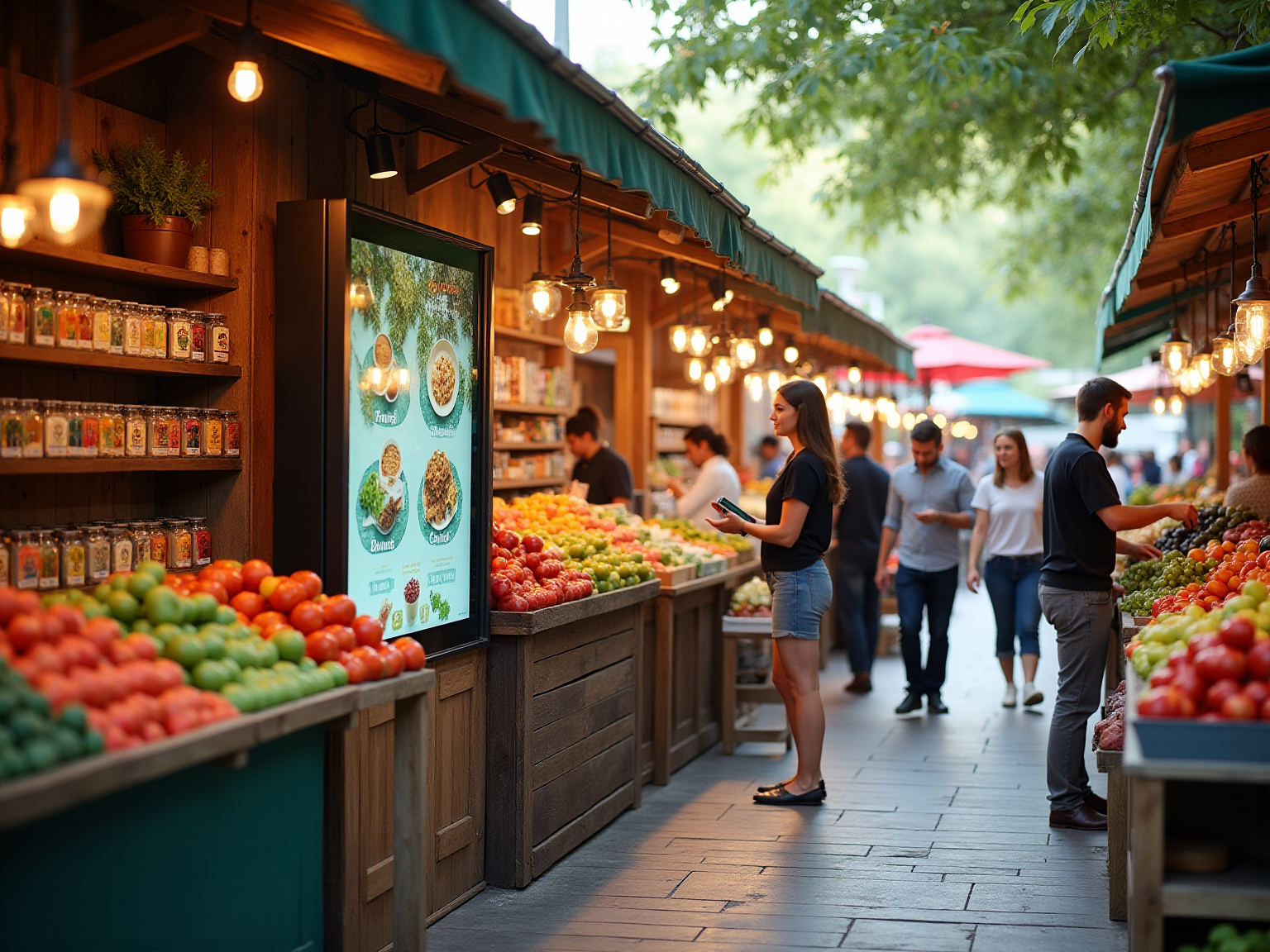Digital Branding Strategies
Best Practices for Responsive Web Design in the UAE Food and Beverage Sector
Overview
Best practices for responsive web design in the UAE food and beverage sector are critical for success. Implementing fluid grids, flexible images, and a mobile-first approach is essential to ensure optimal performance across various devices. These strategies are not just recommendations; they are imperative for enhancing user experience, boosting engagement, and ultimately driving sales.
As mobile usage continues to rise and consumer needs diversify in the region, adopting these practices will position brands advantageously in a competitive market. Brand Managers must recognize that embracing these design principles is not merely a trend but a necessity to meet the evolving demands of their audience.
Introduction
In the fiercely competitive food and beverage industry, a captivating online presence is not merely optional—it is essential. As consumer preferences increasingly lean towards seamless digital experiences, businesses must adopt responsive web design (RWD) to ensure their websites operate flawlessly across a multitude of devices. By integrating fundamental principles such as fluid grids, flexible images, and media queries, companies can craft visually appealing and user-friendly sites that resonate deeply with their audience.
Furthermore, employing industry-specific strategies tailored to this sector can significantly elevate customer engagement and drive sales. This article explores the crucial elements of responsive design and effective user experience practices, providing actionable insights for food and beverage businesses striving to excel in today’s digital landscape.
Understand Core Principles of Responsive Web Design
Responsive web design (RWD) is not just a trend; it is essential for ensuring that web pages perform optimally across various devices and screen sizes. The core principles of RWD include:
-
Fluid Grids: Utilizing relative units like percentages instead of fixed units allows for a flexible layout that adapts seamlessly to different screen sizes. This principle is crucial for culinary and drink platforms, where visual attractiveness can significantly influence visitor engagement.
-
Flexible Images: Images must scale within their containing elements to prevent overflow and maintain visual integrity. This practice ensures that the aesthetic quality of the site is preserved, regardless of the device used.
-
Media Queries: Implementing CSS media queries enables the application of distinct styles based on device characteristics, such as width and resolution. This adaptability is vital in catering to the diverse range of devices consumers use today.
-
Mobile-First Approach: Designing for the smallest screen first and progressively enhancing the experience for larger screens prioritizes essential content and functionality. This method not only enhances the user experience but also aligns with the increasing trend of mobile usage in the UAE, where mobile recycling initiatives have surged by 40% globally, indicating a movement towards environmentally-friendly practices.
In the context of the UAE’s evolving digital landscape, implementing the best practices for responsive web design in the UAE food and beverage sector is an essential step for companies seeking to remain competitive. The average turnaround time for web design projects is approximately two months, underscoring the urgency for brand managers to implement responsive design strategies promptly.
Furthermore, with website design expenses averaging between $1,000 and $1,500 at more than a third of agencies, understanding the financial implications of the best practices for responsive web design in the UAE food and beverage sector is critical for efficient budget management. By following the best practices for responsive web design in the UAE food and beverage sector, culinary and drink websites can establish a cohesive and engaging user experience, ultimately boosting engagement and conversion rates. Additionally, the integration of sustainable methods in mobile technology, as emphasized in the case study on sustainability, reinforces the significance of responsive design in aligning with consumer values and expectations within the dining and refreshment sector.
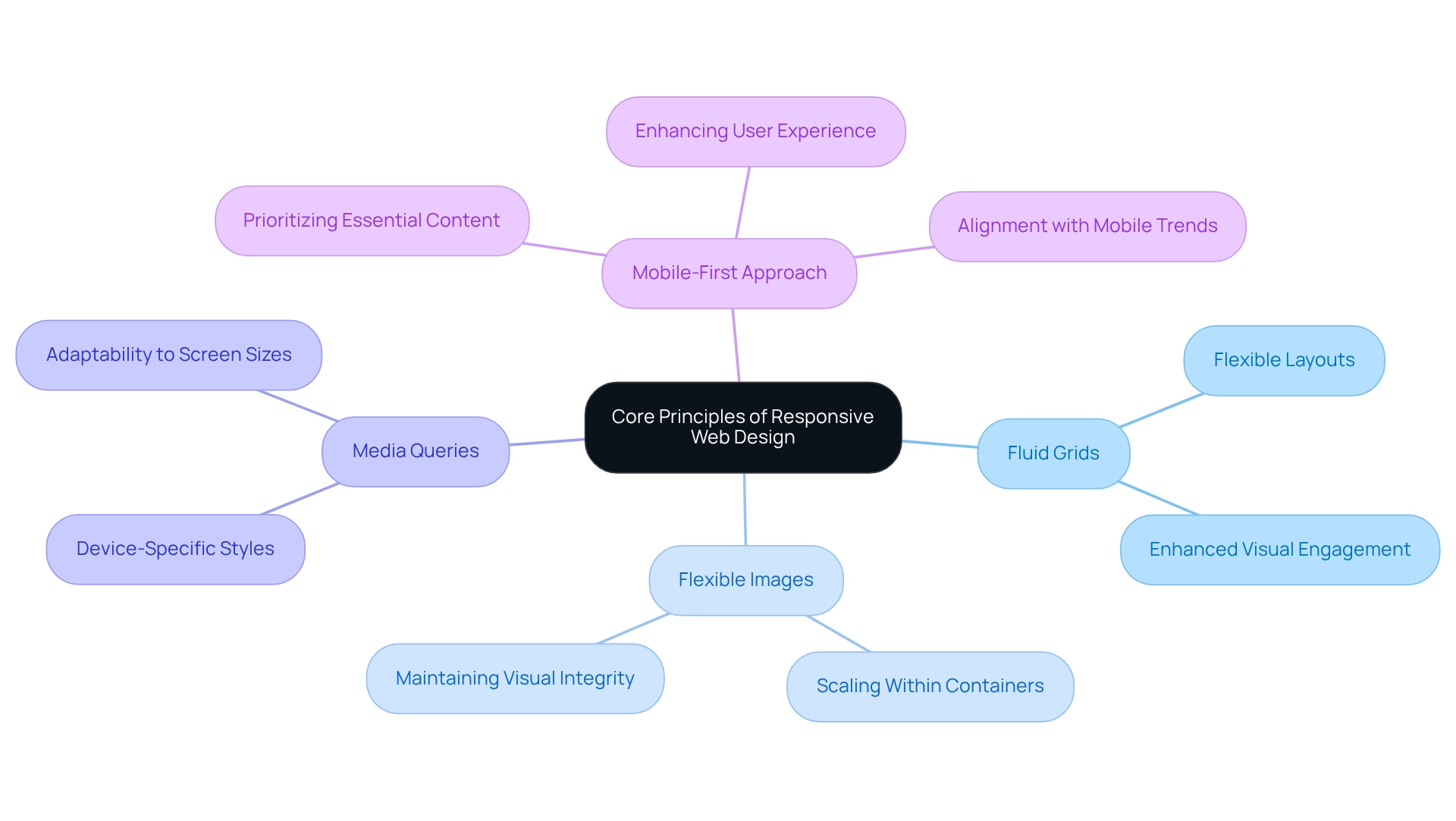
Implement Industry-Specific Design Strategies for Food and Beverage Websites
To effectively engage customers in the food and beverage sector, consider the best practices for responsive web design in the UAE food and beverage sector.
- High-Quality Visuals: Utilize professional photography to showcase dishes and beverages attractively. High-resolution images not only boost engagement but also stimulate appetite appeal—food content on platforms like YouTube has amassed nearly 51 billion views. A study revealed that individuals following instructions with text and illustrations perform 323% better than those without, underscoring the significance of visuals in enhancing the customer experience.
- Clear Navigation: Implement intuitive navigation that enables individuals to swiftly locate menus, specials, and contact information. A well-organized menu significantly enhances customer experience and reduces bounce rates, facilitating exploration of offerings. The effective use of social media platforms is evident, as 91% of restaurants leverage Facebook for marketing, thereby enhancing brand visibility and customer engagement, which reflects the best practices for responsive web design in the UAE food and beverage sector.
- Responsive Menu Design: Ensure that menus are easily readable and interactive across all devices. Utilizing expandable sections for detailed descriptions and pricing enhances usability, catering to the diverse preferences of individuals.
- Call-to-Action Buttons: Strategically position clear and compelling call-to-action buttons, such as ‘Order Now’ or ‘Reserve a Table’, to guide users toward desired actions. This approach can significantly increase conversion rates and drive customer engagement.
- Local SEO Enhancement: Implement local SEO strategies to boost visibility in search results, simplifying the process for potential customers seeking your restaurant or dining service online. This is critical in a competitive market where the fast-food industry experiences an average annual growth rate of 2.4%. By optimizing for local search and adhering to the best practices for responsive web design in the UAE food and beverage sector, businesses can attract more customers and enhance their online presence.
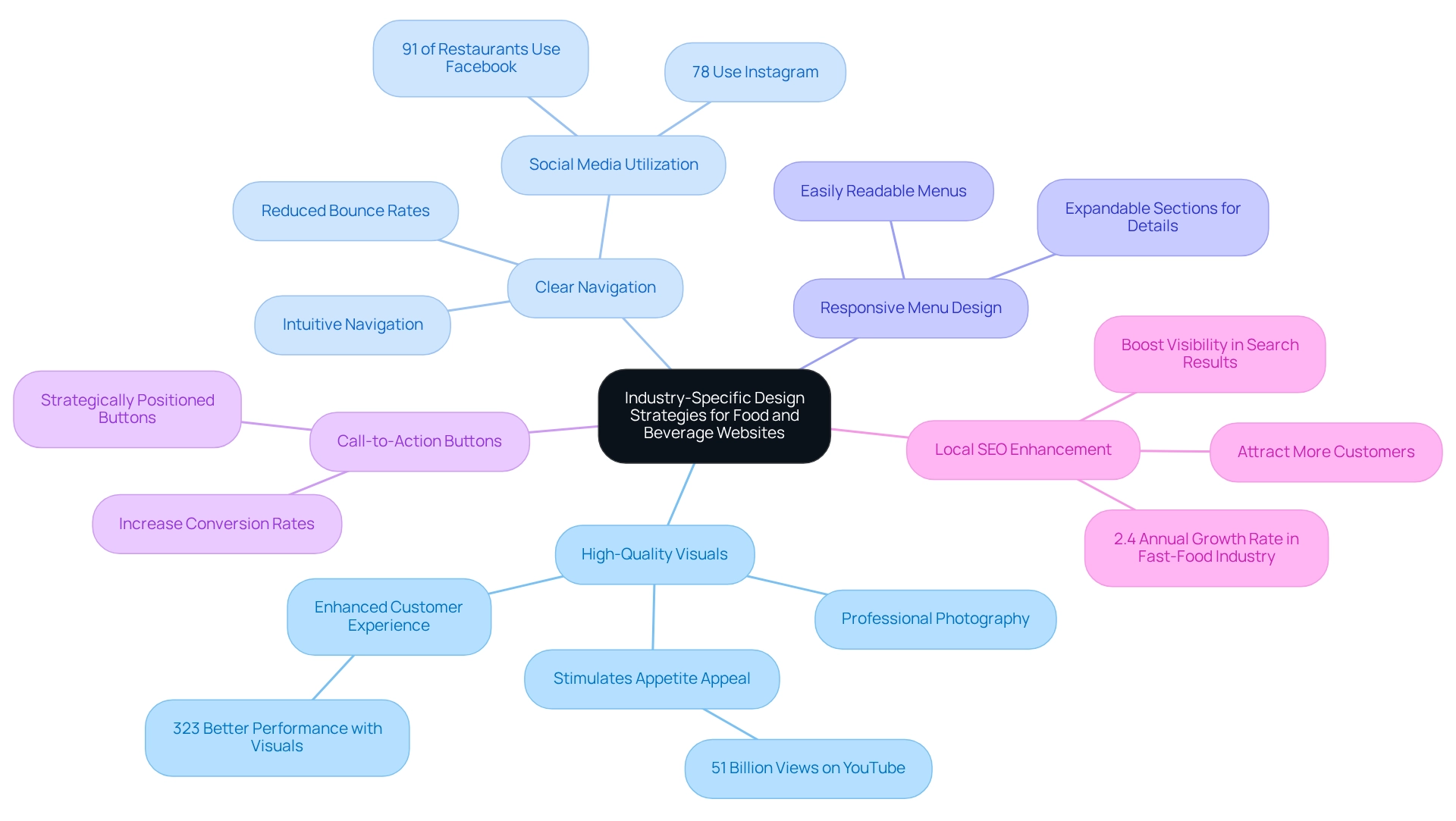
Enhance User Experience to Drive Engagement and Sales
To enhance user experience on food and beverage websites, it is imperative to adopt the following best practices:
- Fast Loading Times: Prioritize online platform performance to ensure rapid loading times. Statistics indicate that over half of visitors abandon mobile pages that take longer than three seconds to load. Furthermore, 39% of visitors will exit the page if images take too long to load. A mere 1-second enhancement in loading duration can lead to a 13% increase in conversions, underscoring the critical importance of speed in retaining users.
- Mobile Optimization: Given that a substantial portion of traffic originates from smartphones, it is essential to fully optimize websites for mobile visitors. This includes implementing touch-friendly navigation and ensuring that text is easily readable on smaller screens. As one UX designer aptly noted, “Mobile-first design is no longer optional; it’s a necessity in today’s digital landscape.”
- User-Centric Design: Focus on the needs and preferences of your target audience. Conduct testing with participants to gather feedback and make iterative enhancements based on actual experiences. Engaging directly with users can unveil insights that significantly influence design choices and improve overall satisfaction.
- Accessibility Features: Implement accessibility features to cater to all users, including those with disabilities. This can involve adding alt text for images, ensuring keyboard navigation, and maintaining screen reader compatibility. Enhancing accessibility for your online platform not only broadens your audience but also demonstrates a commitment to inclusivity.
- Engaging Content: Develop captivating material that resonates with your audience, such as blog posts about culinary trends, recipes, or behind-the-scenes insights into your restaurant. Engaging content not only drives traffic but also cultivates a community around your brand, thereby enhancing customer loyalty.
- Current Trends: Stay informed about contemporary mobile optimization trends for culinary and beverage-related websites, such as the increasing use of GIF images, which account for 54.7% of all images on the web. Adapting to these trends can further enhance user engagement.
By prioritizing client experience and adopting best practices for responsive web design in the UAE food and beverage sector, enterprises can cultivate customer loyalty and stimulate sales growth, ultimately leading to a more successful online presence. Notably, the comprehensive campaign for Quaker Oats exemplifies how effective user experience strategies can foster heightened brand loyalty and improve market performance.
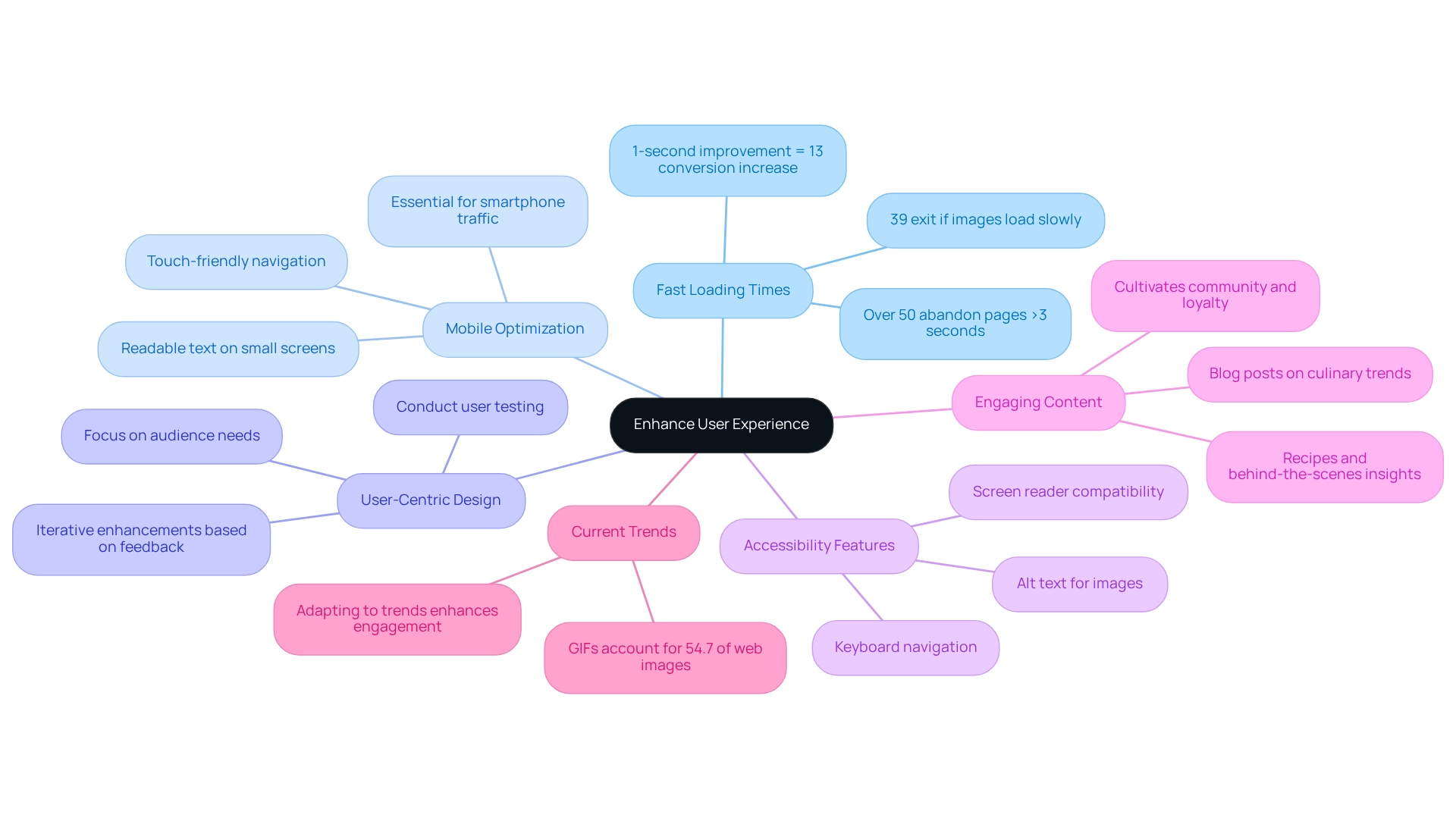
Conclusion
In an increasingly digital world, the significance of responsive web design (RWD) for food and beverage businesses is paramount. By embracing core principles such as:
- Fluid grids
- Flexible images
- Media queries
Companies can craft websites that function seamlessly across various devices and captivate users with visually appealing content. The mobile-first approach ensures that essential information is prioritized, aligning with the substantial mobile usage trends that influence consumer behavior today.
Implementing industry-specific design strategies is equally crucial for engagement. High-quality visuals and clear navigation can transform a website into an inviting space that encourages exploration and interaction. Additionally, responsive menu designs and strategically placed call-to-action buttons guide users toward desired actions, while local SEO optimization enhances visibility, allowing businesses to stand out in a competitive market.
Enhancing user experience is vital in driving customer engagement and boosting sales. Fast loading times, mobile optimization, and user-centric design create a website that meets the needs of its audience. Incorporating accessibility features and engaging content fosters a sense of community and loyalty among customers, ensuring they return time and again.
Ultimately, for food and beverage businesses to thrive in today’s digital landscape, investing in responsive web design and user experience strategies is essential. By prioritizing these elements, companies can improve their online presence and create lasting connections with their audience, leading to increased brand loyalty and sales growth.
Frequently Asked Questions
What is responsive web design (RWD)?
Responsive web design (RWD) is a method that ensures web pages perform optimally across various devices and screen sizes, adapting layouts and content for an enhanced user experience.
What are the core principles of responsive web design?
The core principles of RWD include: 1. Fluid Grids: Using relative units like percentages for flexible layouts. 2. Flexible Images: Scaling images within their containers to maintain visual integrity. 3. Media Queries: Applying distinct styles based on device characteristics using CSS. 4. Mobile-First Approach: Designing for the smallest screens first and enhancing for larger screens.
Why are fluid grids important in responsive web design?
Fluid grids allow for a flexible layout that adapts seamlessly to different screen sizes, which is crucial for visually attractive sites, especially in the culinary and drink sectors where visitor engagement is important.
How do flexible images contribute to responsive web design?
Flexible images scale within their containing elements to prevent overflow and maintain the site’s aesthetic quality, ensuring that visuals remain appealing across all devices.
What role do media queries play in responsive web design?
Media queries enable the application of different styles based on device characteristics, such as width and resolution, allowing websites to adapt to the diverse range of devices used by consumers.
What is the mobile-first approach in responsive web design?
The mobile-first approach involves designing for the smallest screen first and progressively enhancing the experience for larger screens, which prioritizes essential content and functionality.
Why is responsive web design important for the food and beverage sector in the UAE?
Implementing responsive web design is essential for companies in the UAE food and beverage sector to remain competitive, enhance user experience, and align with the increasing trend of mobile usage.
What is the average turnaround time for web design projects?
The average turnaround time for web design projects is approximately two months.
What are the typical costs associated with website design in the UAE?
Website design expenses typically range between $1,000 and $1,500 at more than a third of agencies in the UAE.
How does responsive web design impact user engagement and conversion rates?
By following best practices in responsive web design, culinary and drink websites can create a cohesive and engaging user experience, which ultimately boosts engagement and conversion rates.

